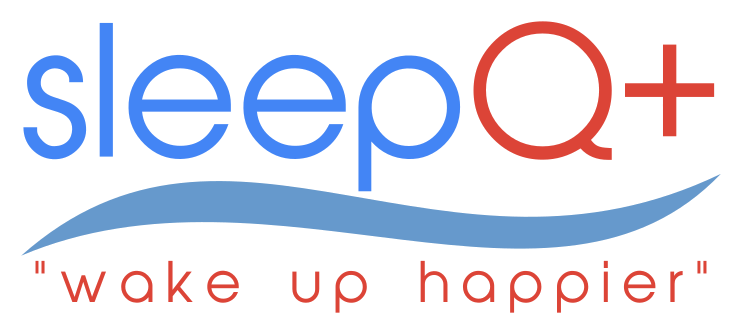September 11, 2017
Let me describe a very common presentation in children’s dentistry. It happens so much, you could almost consider it normal. I see many, many kids present for a dental exam with sleep apnea symptoms.
When they walk into the surgery, the first thing I see is a thin face. Their lower jaw is set back, and their chin is retruded. They have a skinny mid-face and open mouth at rest, indicating mouth breathing.
They look tired, and their nose is stuffy, they have dark circles or venous pooling under the eyes. Their lips are cracked and dry and they have a slouched forward posture.
It’s common to see teeth grinding too. When we talk about sleeping habits, their parents often say they notice them snoring or bedwetting.
Close to 1 in 3 kids suffer from some level of sleep disorder and up to 70% of these are unnoticed. About 15% of kids snore and many parents are unsure about whether their kids have sleep disorders (snoring or not).
Other sleep apnea symptoms in kids include:
Studies are now showing kids with sleep disorders can harm their brain growth. Areas of the brain that control thinking and problem solving are smaller in kids with sleep apnea.
Sleep disorders often begin with mouth breathing
Your kids should be breathing through their nose. Mouth breathing does not deliver adequate oxygen to their body. Young developing bodies and brains are oxygen hungry, which is why the impact on a child’s health can be severe.
Nasal breathing creates nitrous oxide in the nose, which increases oxygen perfusion. It drives blood flow to the lungs by increasing blood flow, oxygen, and CO2 levels. It also slows the breathing rate and improves overall lung volumes.
Nitric oxide is not produced if kids aren’t nose breathing. Kids who mouth breathe, receive cold, unfiltered air that delivers little oxygen.
One of the most obvious signs of mouth breathing is crooked teeth. Children with high palates have small nasal sinuses. Airflow through the nose is impaired, and mouth breathing can occur, especially during sleep.
Kids brain development and sleep disorders
Kid’s sleep disorders and snoring can directly impact brain development. Sleep is the time where the brain grows and regenerates. During childhood, crucial neural stages occur during sleep.
Sleep disorders are more common in special needs kids, psychiatric disorders or autism.
A lack of oxygen during sleep will starve a child’s brain. Not only does the amount of sleep matter, but the quality of sleep. Oxygen deprivation sends the brain into survival mode, robbing it of proper growth.
Snoring and sleep disorders cause the release of stress hormones. This can be in response to airway closure that increases breathing pressure.
From ages 0-6 the brain is going through remarkable growth. By age six, the brain is at 95% of adult brain weight and peak energy consumption. But up to age twelve, the brain is undergoing critical developmental stages.
Between ages six to twelve, neural connections become more complex and adult-like. From ages 8-11, for example, future IQ will be influenced by learning music.
Negative factors such as bullying and abuse during these years can inhibit brain development.
Behavior and sleep disorders
ADHD is commonly associated with sleep disorders. However, the relationship is complex and bidirectional.
Studies suggest about 5% of all children suffer obstructive sleep apnea (OSA). OSA is the most severe form of sleep disorders, it’s defined by pauses in breathing or ‘apneas’ that expose the brain to lack of oxygen for short periods. The child either wakes up, or the brain opens the airway by teeth grinding.
One study compared brains of kids between 7 and 11 years old with and without sleep disorders. Kids with OSA had decreased gray matter volume measured in the brain. These control cognition and mood. They also showed shrinking in areas involved in thinking and problem solving.
Sleep apnea symptoms in kids can be improved by increasing airway size. Removing tonsils and adenoids may improve children’s school performance in kids with ADHD as well as behavior and sleep-related issues. Evidence in this area is mixed, and experts don’t yet agree on its overall impact on cognition.
The evidence is mounting on the importance of breathing for healthy kids development. Sleep apnea symptoms have close links to a decrease in brain development in kids.
Like adult sleep disorders, diagnosis in kids is difficult. A high number of sleep disorders, don’t test positive for OSA.
The number of kids with upper airway resistance syndrome is not well understood. More research is needed, but experts agree that healthy kids need to sleep better. Many kids show signs of sleep disorders such as snoring or teeth grinding.
If you think your kid has sleep apnea symptoms, consult your GP or Dentist right away.
Dr. Steven Lin.
Updated September 11th 2017
Comments will be approved before showing up.
March 09, 2025
There is extensive scientific research that supports the link between mouth breathing and sleep disorders.
The nose is nature’s design to deal with air intake. (1) Mouth breathing is linked to reduced exercise capacity (2), snoring, sleep apnea, (3) sleep disorders and attention deficit hyperactive disorder (ADHD) (4) sinus congestion, facial abnormalities (5), allergies, asthma, dental crowding and crooked teeth. (6)
October 21, 2022
July 20, 2022
